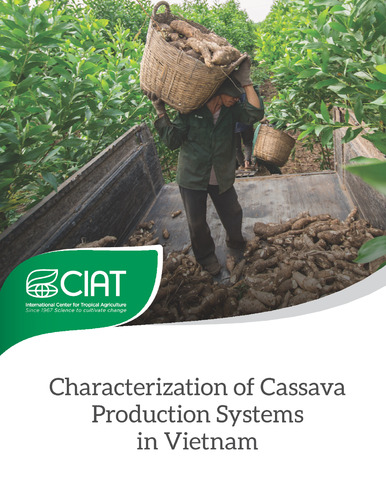Characterization of cassava production systems in Vietnam
Using a nationally representative survey of cassava-growing households in Vietnam and a robust method of varietal identification based on DNA fingerprinting, this paper provides a broad picture of cassava production and socio-economic characteristics of cassava producers in the country. It presents a descriptive analysis of cassava production practices, varietal use, varietal preferences, as well as cassava utilization, and marketing. Results indicate that more than 85% of the cassava area in Vietnam is planted to improved varieties. The average yield at national level is 19 tons per hectare. About 69% of total cassava produced per household is sold as either fresh roots and/or dried chips. The remaining 31% is either for own consumption or for livestock feed. Of all the six regions surveyed, the Southeast is characterized by the most intensive cassava production practices. It also has the largest average cassava area per household, the highest percentage of tractor use, and a higher percentage of fertilizer application on cassava fields.
The findings suggest that there are huge challenges for sustainable cassava intensification, specifically in identifying the needs for market diversification, dealing with emerging pests and diseases, and implementing adequate soil management practices. This is particularly challenging in a system that is driven by the need to maximize output with minimum investment. Future research and development should focus on integrated value chain development with multiple actors focusing attention on integrated pest and disease management, seed systems development, breeding for resistance and earliness, and climate change adaptation, among others.

